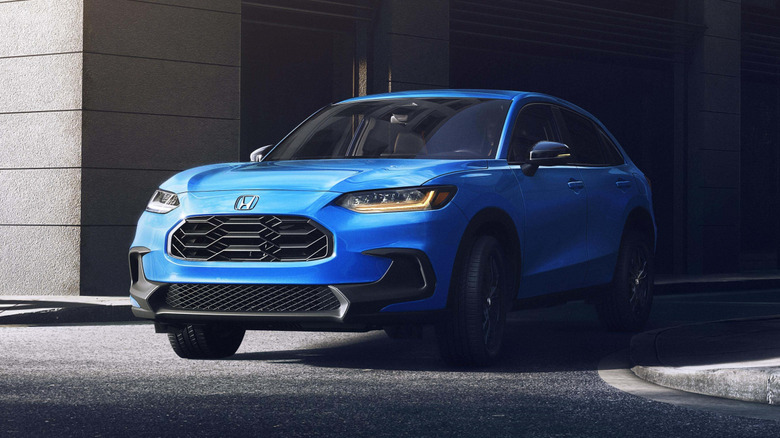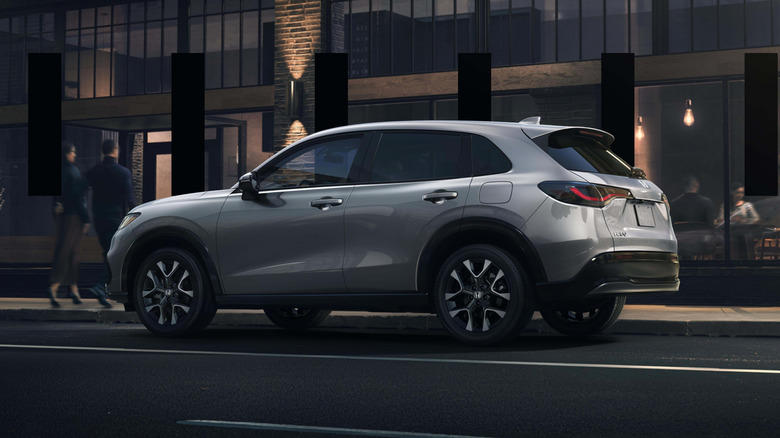Honda HR-V: What Do The Letters Stand For?
Today, the HR-V serves as Honda's entry-level crossover, serving as the entry-level Honda model for 2025. In 2024, the HR-V recorded its best sales year to date in America, with over 150,000 examples finding a home. Despite its popularity, many of the HR-V's latest buyers likely don't know the origin of their new car's name.
The first generation of the HR-V was launched in Japan in 1998, with Honda pitching it towards young people who wanted a high-riding car that was small and affordable. The brand also claimed that the HR-V was an entirely new genre of car at the time of its launch.
The HR-V name was coined to reflect these selling points, and stood for Hi-rider Revolutionary Vehicle. Initially, the car was only available as a three-door, but a five-door version was introduced in 1999. It was longer and more spacious than the original three-door design, but still featured the same elevated ride height and boxy design. Honda claimed the car was designed to evoke a "jet feel," although with a modest 123 horsepower on offer in the top-spec variant, it certainly wasn't jet-like in performance terms.
It would take until the 2016 model year for the HR-V to launch in America. By that time, the car had evolved into a more conventional small crossover and was based on the same Global Compact Series platform that underpinned the brand's other small cars.
The modern HR-V doesn't entirely live up to its name
While the latest HR-V looks very different to the original crossover that launched in Japan almost 30 years ago, much of its core appeal remains the same. It's still small and affordable, but boasts a more upright stance than Honda's other compact cars. It's also still tall: The latest HR-V is up to 63.8 inches tall, while the Civic Hatchback is 55.7 inches tall. It's safe to say that it's still a Hi-rider, although it's a lot less revolutionary than it once was thanks to the ubiquity of crossovers and SUVs in today's market.
Honda has given the HR-V some new features for 2026, including some exterior styling tweaks, new colors, and rear privacy glass. It's also revised its suite of in-car tech, with wireless Android Auto and Apple CarPlay and standard wireless phone charging pads. Also new are additional USB-C ports to keep passengers' small devices topped up with charge on longer journeys.

